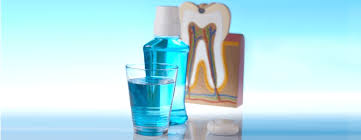Brushing and flossing are of course critical to good dental health, but there is one more weapon in the fight to avoid cavities and keep gum disease away: an effective mouthwash. Here are five things to remember as you add (or maintain) rinsing to your oral care routine.
- Choose the right kind of mouthwash. Some will only freshen your breath but not get rid of the bacteria that are causing problems to begin with. In order to get full protection, use a therapeutic mouthwash. Given all the products on the market, choosing the right one can be confusing, but there is an effective shortcut. Look for the Australian Dental Association’s seal of approval, as it will only approve products that work.
- Brush and floss before you use mouthwash. That way you’ll get rid of plaque and any oral debris, clearing the way for the mouthwash to be most effective.
- Use the right amount of mouthwash. The correct dosage will be on the label, but it should be around 20 ml (4 teaspoons), which is probably more than you would think to use.
- Swish for the full recommended time, usually 30 seconds to a minute. Use a stopwatch the first time you rinse to see if you are rinsing long enough. If it is uncomfortable using a therapeutic mouthwash for at least 30 seconds, then start with 10 seconds and build up to the full amount of time in ten-second increments. The mouthwash only works in your mouth – not in the medicine cabinet – so be kind to yourself and take the time you need to work rinsing into your routine.
- Finally, mouthwash will have a longer effect if you don’t rinse your mouth out after using it. However, it’s your choice. It’s better to use mouthwash and rinse than not to use it at all.
As each person’s oral care needs are different, it’s a good idea to consult with a dentist to learn about the various considerations and develop a routine that is best for you. At Morrin Dental, we are always here to help.
